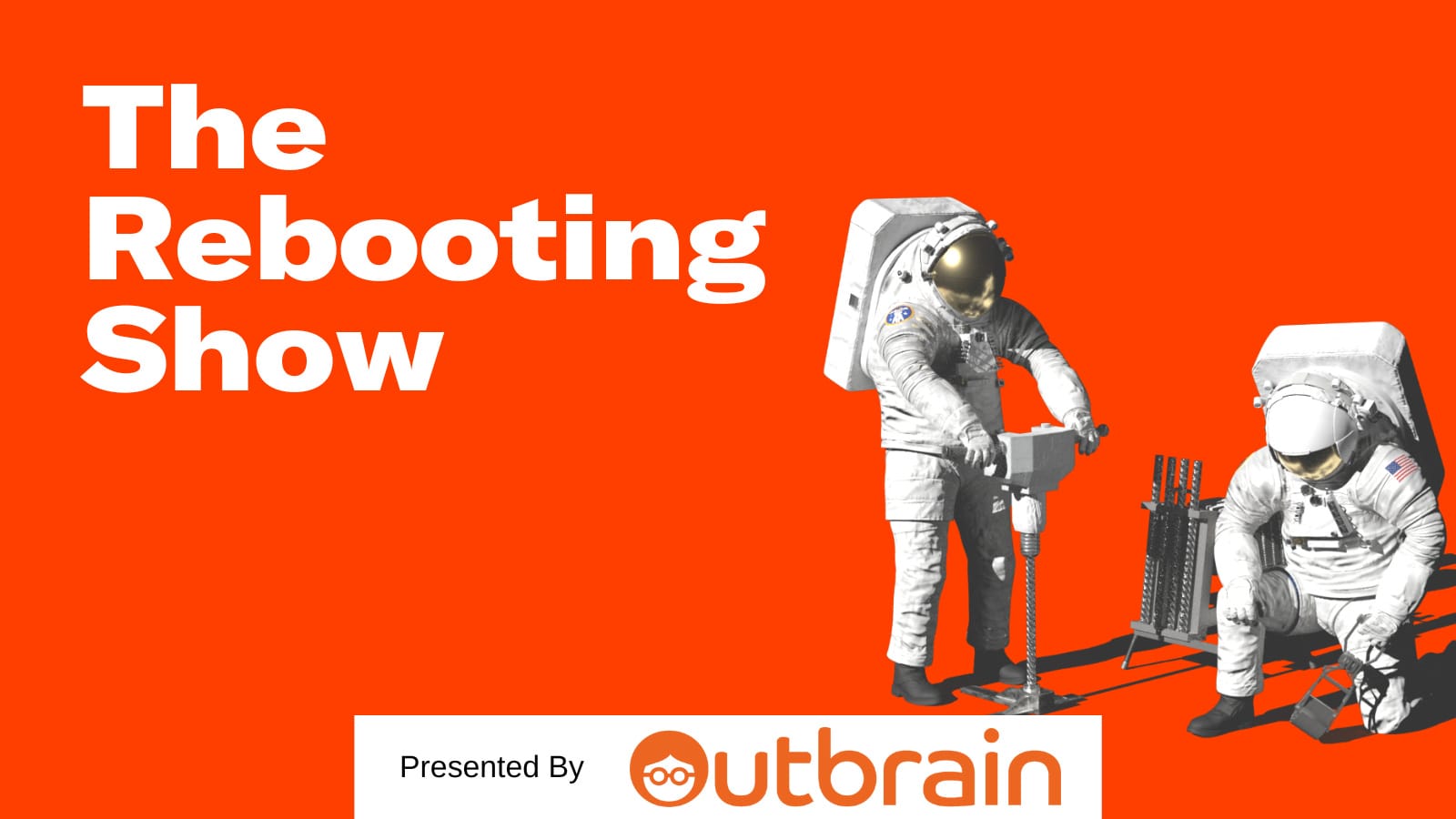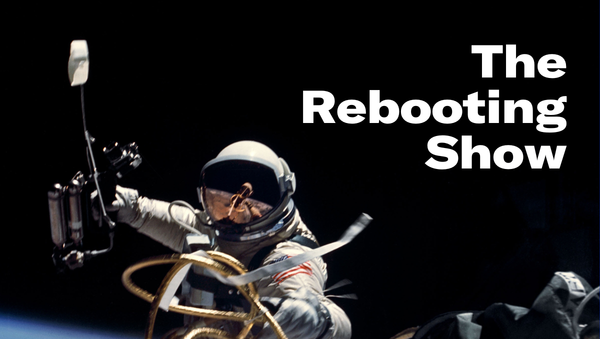Fixing local news
The urge to "do something" has led to pressure for legislation

Quick reminder: If you’re heading to the Consumer Electronics Show in Las Vegas in January, please come by the Aria for lunch and a conversation about the how marketers can support the development of independent journalism while still meeting their performance goals. The lunch event is on Jan. 5. RSVP here. Appreciate the support from Outbrain that made this possible.
This week, I had a conversation with Chris Krewson about the role of government in altering the local news market, along with some thoughts on why Google could be threatened by ChatGPT and finally some recommendations.

Unintended consequences

Subscribe to The Rebooting Show on Apple or Spotify
The dearth of local news has gotten the attention of governments, particularly at a time of peak skepticism of the role tech platforms are playing in our societies and the power they’re accruing with their vast stores of data and moves into areas like artificial intelligence.
There’s the understandable urge to “do something” to fix the difficult situation the news business finds itself in. Government intervention in markets has historically been less common in the U.S., but we’re in a time of aggressive industrial policy becoming the norm with measures like the Chips Act and the climate bill.
Enter the Journalism Competition and Preservation Act, a bill that was attached to the defense bill winding its way through Congress. The JCPA would force big tech platforms to pay local news publishers for the privilege of sending traffic to these publishers.
The measure, which at the moment has been removed from the defense bill although it could always get added back in upcoming the back-and-forth, has proponents who claim that it is a “lifeline” to local publishers by sweeping aside antitrust restrictions to allow them to collectively negotiate terms with big tech platforms like Google and Facebook parent company Meta. Detractors see a cash grab by local news chains that are often run by deep pocketed private equity firms. For its part, Meta has threatened to exit exit news altogether if the measure passes.
On this week’s episode of The Rebooting Show, I spoke to Chris Krewson, executive director of the Local Independent Online News publishers group, to understand the possible unintended consequences to the bill, which Chris sees as mostly benefiting incumbents, many of which continue to cut journalists as a result of bad business decisions. It doesn’t help that many legacy chains are owned by private equity firms that probably shouldn’t need government assistance.
Thanks to Outbrain for making this conversation possible as part of a series I’m doing focused on sustainable local news. If you are going to CES in Las Vegas in January, please consider joining me at an event we’re putting on on Thursday Jan 5 at 11:30am at the Aria hotel restaurant Catch. I’m going to be discussing the advertiser role in supporting sustainable news at a time when budgets are being squeezed. I’ll be speaking to industry leaders, including GroupM chief innovation officer Krystal Olivieri. Would love to have you join us. RSVP here.


Establishing a direct relationship with your audience is critical but only the first step. It’s imperative to keep your audience engaged, as at any point in time publishers see as much as two-thirds of their list disengaged. That’s where re-engagement campaigns come into play. By sequencing messaging, publishers can win back a good chunk of subscribers and turn them into active recipients. What’s more, re-engagement campaigns are ideal ways to learn more about what caused people to lose interest – and what you can do to improve, whether that’s sending fewer emails or improving your segmenting. Omeda, the marketing automation platform, covers the basics of re-engagement campaigns and how to win back lost subscribers.

Google’s existential threat
I’ve covered Google long enough to remember when Carol Bartz, who was the potty-mouthed CEO of Yahoo at the time in 2010, calling Google a “one-trick pony.” Google’s deadpan response: It’s a pretty good trick. As its search ad system grew more powerful and dominant, it became clear a dominant position in search advertising was akin to having a money-printing machine.
In this era, there were many pretenders to Google’s position as the generic term people would use for internet search. One of the most promising, at least in theory in the early 2000s, was Ask Jeeves. The idea was this very stereotypical cartoon butler character would “go beyond 10 blue links” and give you the answers directly. Jeeves had “smart answers” for basic search requests. And it worked for them, only it didn’t scale.
Artificial intelligence is the path. That was the idea behind Cha Cha, another service that caught my fancy a few years later. It promised you could ask a question by SMS – this was when you had to use T9 – that would then be fed to an army of human guides who would hunt down the answer and text you back. It worked… sometimes. If you think it’s a ludicrous idea, well, Jeff Bezos invested in it.
Neither effort made a dent in Google. Even Microsoft couldn’t make a ton of headway, despite pouring tons of resources into its search efforts, although Bing is far more profitable than any publisher. The point is, Google never really faced any serious threats to its search dominance, other than Amazon siphoning off some commercial searches. Hell, Google even bought what would become the No. 2 search engine that nobody saw as a search engine: YouTube.
Maybe Google will finally get real competition from OpenAI. The release of ChatGPT has the markings of a watershed, before-and-after moment. Using it feels like peering into what the future of search will look like. What’s intriguing is how Google left its guard down despite a service like this being a clear threat to its cash cow while it monkeyed around with all manner of tangential projects that never made much of a difference to its business.
Alex Kantrowitz at Big Technology sees a case study of the Innovator’s Dilemma, a risk-averse incumbent terrified of disrupting its core business and therefore opening the door to being disrupted. On the new episode of People vs Algorithms, I discussed the ramifications of AI with Troy Young and Alex Schleifer. One hypothesis that came up is Google simply couldn’t go first. This technology is going to be scrutinized very closely – and with good reason – and the current mood around the tech industry isn’t great. Google saw what happened to Facebook when it simply suggested a digital currency. Meanwhile in the Bahamas…
The next several years will likely see breathtaking advances in AI. What Lensa is doing with selfies, with some controversy naturally, and what ChatGPT is doing still as a research project, are early versions of what these large-language models can accomplish. I like to compare ChatGPT now to that giant cell phone Michael Douglas wielded on Wall Street. We saw where that went.

Recommendations
Forget peak newsletters, they’ll continue to be an ideal starting point for new publications. Some will remain personal newsletters, others will expand to become more like regular publications. That’s the path Bari Weiss is taking with The Free Press, a new media company the former New York Times columnist is building off her popular newsletter, Common Sense. I believe we’ll see a shift from creator this and that to the wonders of a group of like-minded individuals gathering together to build a brand. Yes, a big part of the future always looks a helluva lot like the past. Meanwhile, Punchbowl is expanding with the addition of a new editor and reporter.
The conundrum of starting a media company is you often need to build an audience before you can make money. Some niche publishers can start small and rely on subscriptions out of the gate, but it’s hard to pull this off for an ambitious play like Semafor. Mark Stenberg at Adweek has a good look at how Semafor is relying heavily on events as a revenue driver in its first year, expecting 30% of its sales to come from a slate of events it plans to grow from 15 this year to 40 next year.“Subscriptions and advertising require a long time to build up. An events business, if you do it well, can be monetized right away,” Semafor CEO Justin Smith told Mark. This is very true. The wrinkle, of course, is events are hard to scale. Doing 40 is a big lift, and even if you’re global there are only so many events you can not only put on but also market.
RIP Bookforum. The literary business offshoot of Artforum is shuttering after PMC bought Artforum. Shuttered publications are rough on all involved, although it’s better to be clear-eyed about purchasing an asset rather than make cuts in increments. Unfortunately, several publications are unlikely to make it through 2023, as deteriorating economic conditions force tough decisions that are easier to put off during flush times. Side note: Penske has amassed an interesting collection of niche media assets, both consumer and business-focused. It’s a company that keeps a low profile yet has a good reputation as shrewd and disciplined operators. (I hope this doesn’t go the way of my compliment to Vox for sticking with its outsourced CMS business that it was in fact shuttering.)
The battle between tech people and media people is highly annoying, filled with disingenuousness, kernels of truth stretched beyond reason. Obviously, the role of many journalistic publishers is changing. There are new outlets springing up, super-empowered individuals amassing audiences and influence once reserved for those who “bought ink by the barrel. We love to go to zero-sum games and claim various things are dead. In fact, most stuff doesn’t die. Charlie Warzel at The Atlantic has an interesting Q&A with the “30-year-old Michigan psychiatrist who investigates financial crimes as a hobby” behind Dirty Bubble Media, a Substack that played a major role in unraveling FTX. Newsletters will continue to evolve and inevitably individuals will play a bigger role in how we understand the world around us. The anti-journalism tech people might root for that to wipe away “corporate media,” but I suspect this is another case of and not or. The same case will be made of generative AI evolving to replace one to many media with personalized music, books, news, moves and more. Maybe I’m naive, but I believe people will continue to want shared experiences. A White Lotus only you have seen wouldn’t be that fun.
I try to avoid predictions, but an easy one is the Boss Class using Elon Musk’s slash-and-burn management style at Twitter as cover to enact their own versions of “extremely hardcore.” This will be helped along by a tough economy and lots of layoffs swinging the balance of power to the company side at the expense of labor. Like most trends, this will be incubated in Silicon Valley, like open offices, free snacks, OKRs and other hallmarks of the modern office. Ultimately, the market will decide where we end up as companies weigh the productivity gains from going very lean mitigate the inevitable attrition of high-performing workers who aren’t sufficiently hard core to sleep at HQ.

Resources*
People in the U.S. are twice as likely to pay for a news subscription as Brits. (The biggest spenders on news subscriptions remain in Scandinavia.) PugPig’s State of Digital Publishing Report has lots of audience behavioral insights it’s collected from data its analytics software collects and interviews with publishers. Download it.
The Webby Awards final deadline is Dec. 16. They have many publishing categories, including best newsletter, podcast and independent publisher. Enter here.
Have lunch with me in Las Vegas. On Thursday, Jan. 5, I’m having a conversation about the advertiser role in supporting the development of a sustainable local journalism ecosystem. Register here.
*These include business partners

Send me your feedback: bmorrissey@gmail.com
Sponsor The Rebooting: More info here.
Sign up for invitations to Rebooting events: Fill out this quick form.




